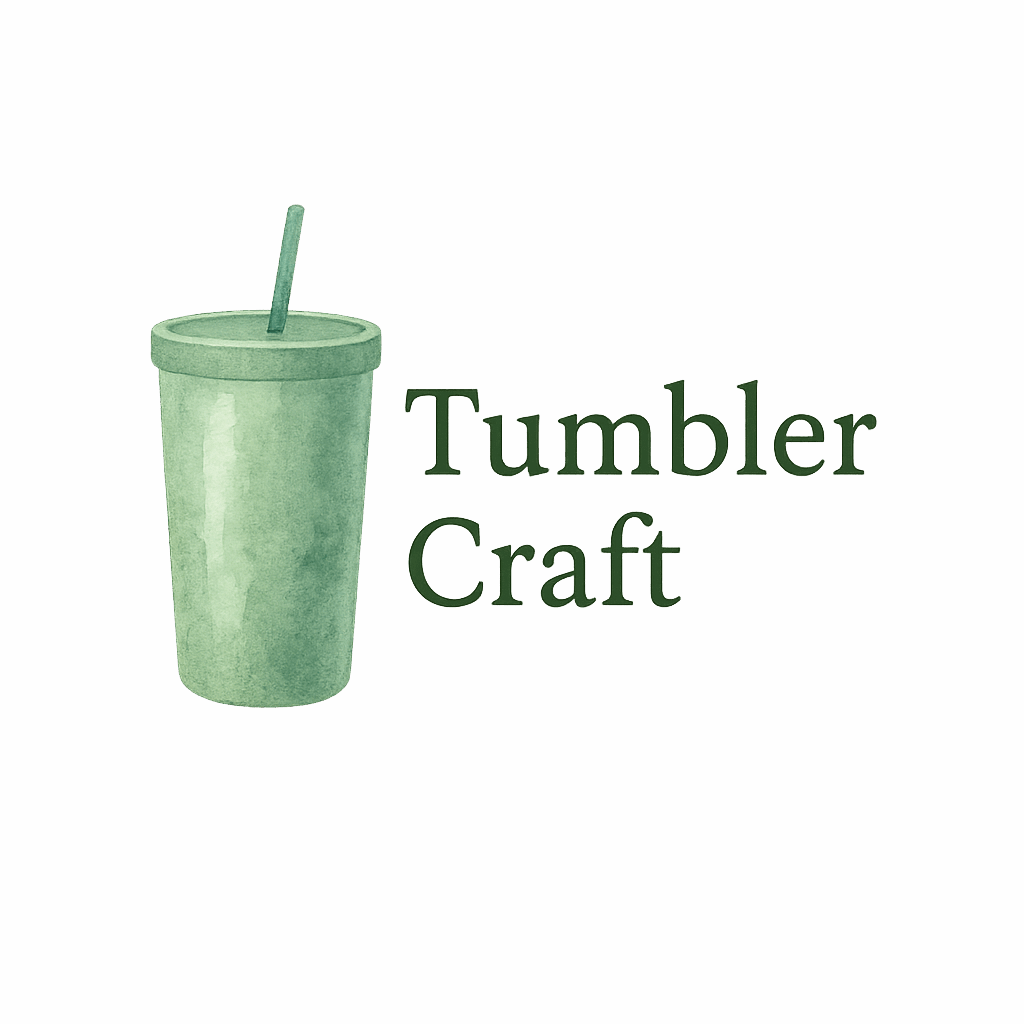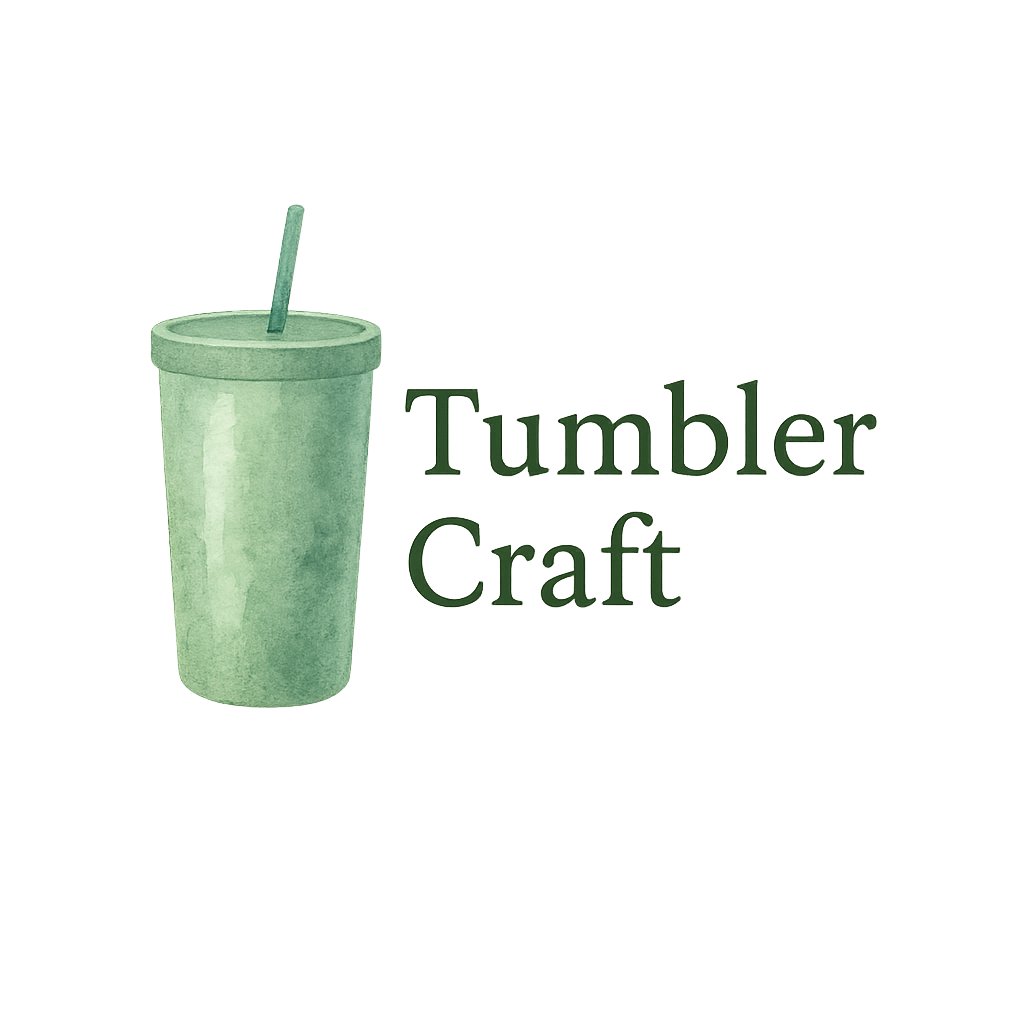Introduction
Pricing your tumbler crafts can feel like a guessing game, right? You’ve poured hours into designing, crafting, and perfecting your tumblers—but how do you actually figure out what to charge for them?
Whether you’re just starting out or looking to refine your tumbler business strategy, this guide will walk you through seven solid ways to price your tumbler crafts for profit—without undervaluing your work.
Let’s dive in and make those beautiful cups as profitable as they are pretty.
1. Understand Your Total Costs
Before slapping on a price tag, you need to know what each tumbler truly costs you.
Material Costs
Start by tracking the exact materials used in each tumbler. That includes glitter, vinyl, epoxy, decals, and the tumbler itself. If you buy in bulk, divide the cost per unit to keep it accurate.
Want a deeper dive into materials? Check out our guide on DIY Materials and Tools & Materials.
Tool and Equipment Costs
Now think about your equipment—heat guns, turners, sealers. Spread these out over the number of tumblers you expect them to help produce.
Learn more about smart investments in Crafting Gear and Must-Have Tools.
Labor Time and Effort
Your time is valuable. Period. If it takes you 3 hours to complete one tumbler, estimate your hourly rate (say $15/hour) and multiply. That’s $45 just for your time.
2. Factor in Overhead Expenses
Beyond the direct costs, you’ve got overhead—those sneaky expenses that can eat into your profits.
Studio Space and Utilities
Even if you’re working from home, you’re still using electricity, space, and storage. Add a portion of your rent or utility bill to your cost breakdown.
Shipping and Packaging
Don’t underestimate packaging. Bubble wrap, boxes, labels, and postage all add up. If you offer free shipping, that cost comes out of your pocket unless you’ve built it into the price.
Want better shipping hacks? Our Business Tips tag is packed with strategies.
3. Determine Your Desired Profit Margin
This is where the magic happens—setting your price for actual profit.
What’s a Good Profit Margin?
A typical craft profit margin ranges from 30% to 50%, depending on your niche and quality. High-end or custom tumblers can go even higher.
Pricing Formula Basics
Here’s a quick formula you can adapt:
iniSalinEditPrice = (Material Costs + Overhead + Labor) x (1 + Desired Profit Margin)
Example:
If your total cost is $20 and you want a 50% profit margin:Price = $20 x 1.5 = $30
For detailed financial breakdowns, check our Profit Guide.

4. Research Market Trends and Competitors
You’re not pricing in a vacuum—look at what others are charging.
Analyze Other Tumbler Sellers
Scroll Etsy, Instagram, or Pinterest. See what’s trending, what’s selling, and at what price point.
Stay inspired with Instagram Crafters and our Follow Inspiration tag.
Identify Unique Selling Points
Are you using special epoxy, glitter swirl techniques, or custom name decals? Charge extra for it! Your unique touches are what make people buy from you.
Explore more ways to stand out with Tumbler Art and Epoxy Tumbler content.
5. Create Tiered Pricing Strategies
Tiered pricing lets you serve all customer levels—from budget-conscious to high-end collectors.
Basic, Premium, and Custom Tiers
Offer a basic tumbler for $25, a premium version with glitter and epoxy for $40, and a fully custom design for $60+.
Learn to set this up like a pro in our Business section and explore more Craft Pricing strategies.
Limited Edition or Seasonal Offers
Introduce exclusive designs during holidays or special events. Scarcity creates urgency—and urgency sells.
6. Don’t Forget Time and Skill Value
Your skills matter—especially if you’ve been doing this a while or are using advanced techniques.
Experience Matters in Craft Pricing
Seasoned crafters can (and should) charge more. If you’ve spent years perfecting your technique, that’s baked-in value your customers are paying for.
Crafting Techniques That Boost Value
Certain techniques, like achieving a Flawless Finish, double-glitter layers, or custom decals, are worth a premium.
Learn these in our Tutorials or explore Crafting Techniques.
7. Test, Adjust, and Reevaluate Your Prices
You won’t get pricing perfect on day one—and that’s okay!
A/B Pricing Experiments
Try offering the same tumbler at different price points to different audiences. Which sells more? Which gives you better margins?
Our DIY Projects and Start Crafting resources help you explore different angles.
Customer Feedback and Sales Insights
Ask your buyers for feedback. Are they happy with the price and quality? Do they mention the tumbler was “worth it”? Use those insights to refine your strategy.
Dive deeper into customer-focused selling with the Sell Tumbler tag.
Conclusion
Pricing your tumbler crafts doesn’t have to be stressful. When you break it down—total costs, overhead, profit margins, competition, and your unique value—it becomes a smart, data-driven decision. And with a little flexibility and testing, you’ll find that sweet spot that earns you real profit and happy customers.
Crafting is your passion—but pricing it right is what turns your art into a business.
For more inspiration and tools to grow, visit TumblerCrafts.com.
FAQs
1. What’s the average price for a handmade tumbler?
Most handmade tumblers range from $25 to $60 depending on design, materials, and labor.
2. Should I include shipping in my tumbler price?
It depends. You can either include it and offer “free shipping” or keep it separate. Just make sure you’re covering the cost.
3. How often should I reevaluate my pricing?
Every 3–6 months, or whenever your material/labor costs change significantly.
4. Can I charge more for custom tumblers?
Absolutely! Custom work involves extra time and design effort, so you should charge accordingly.
5. What’s the biggest mistake new crafters make with pricing?
Undervaluing their time and forgetting overhead costs like packaging and tools.
6. How do I justify higher prices to customers?
Highlight your quality, customization, unique techniques, and attention to detail. Use storytelling in your product descriptions.
7. Where can I learn more about turning tumbler crafting into a business?
Start here: https://tumblercrafts.com/business and explore our tags like Beginner Crafts, DIY Tips, and Tumbler Influencers.


